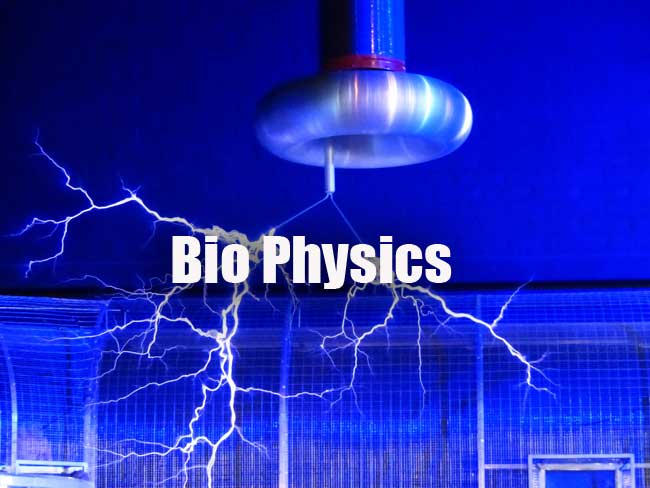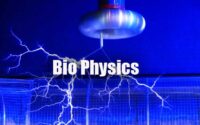Biophysics Questions and Answers
Biophysics Questions and Answers paper for the written examination is given below. Candidates who are looking for Biophysics exam Questions and Answers paper can find in this section. The applied candidates who are getting prepared for the Biophysics can view this page for the Biophysics Last Ten Years Questions and Answers Papers.

Download the Biophysics Questions and Answers & Solutions & make it as a reference for your exam preparation. Take advantage of these Biophysics Questions and Answers Papers in a proper manner to get qualifying Marks. Last 5 years Biophysics Questions and Answers Papers provided here. Candidates who are applied for the above exam can check and download the Biophysics Questions and Answers Papers from here.
Questions and Answers on Biophysics
1. Cell junction in smooth muscle is —
(1) Tight junction
(2) Zonula adherens
(3) Macula adherens
(4) Gap junction
2. Synaptic potential can be recorded by
(1) Patch clamp technique
(2) Microelectrode
(3) EEG
(4) Voltage clamp technique
3. All of the following transport processes follow “Saturation Kinetics” except :
(1) Simple diffusion
(2) Na+ coupled active transport
(3) Na+ – Ca2+ exchanger
(4) Facilitated diffusion
4. The force of muscle contraction can be increased by all of the following except :
(1) Increasing the frequency of activation of motor units.
(2) Increasing the number of motor units activated
(3) Increasing the amplitude of action potentials in the motor neurons.
(4) Recruiting larger motor units.
5. Which one of the following statements is true for Excitatory Post Synaptic Potential (EPSP) ?
(1) Are self-propagating
(2) Show all or none response
(3) Are proportional to the amount of transmitter released by the presynaptic neuron.
(4) Are inhibitory at presynaptic terminal.
6. Amongst the muscles, skeletal muscle is the most excitable tissue because :
(1) There are two “T” tubules per sarcomere and has well developed sarcoplasmic reticulum.
(2) It is supplied by large myelinated nerve fibres.
(3) It is nerve regulated
(4) None of the above
7. The cell junctions allowing exchange of cytoplasmic molecules between the two cells are called :
(1) Gap junction
(2) Tight junction
(3) Focal junction
(4) None of the above
8. Cell shape and motility are provided by:
(1) Microfilaments
(2) Microtubules
(3) Golgi apparatus
(4) Nucleus
9. D2O (Deuterium oxide) is used to measure volume of
(1) Blood
(2) Intracellular fluid
(3) Total body water
(4) Extracellular fluid
10. A solution contains 1 gram-mole of magnesium sulfate per litre. Assuming full ionization of this compound, calculate the osmotic pressure of the solution. ( 1 m osmole/litre concentration is equivalent to 19.3 mm-Hg Osmotic pressure)
(1) 19.3 mm Hg
(2) 38.6 mm Hg
(3) 3.86 mm Hg
(4) 57.900 mm Hg
11. “Patch-clamp” is used for
(1) To record facilitated diffusion
(2) To record flow in voltage gated channel
(3) To record osmotic pressure around semi-permeable membrane
(4) To record resting membrane potential
12. All of the following are true about excitation contraction coupling, expect :
(1) Acetylcholine is released at the nerve terminal
(2) Calcium is pumped back into the sarcoplasmic reticulum during relaxation
(3) Calcium is released from sarcoplasmic reticulum during contraction.
(4) Calcium binds to tropomyosin to initiate muscle contraction.
13. Osmotic pressure can be calculated by using :
(1) Bernoulli’s law
(2) Ohm’s law
(3) Van’t Hoff law
(4) Poiseulle’s law
14. Barometric pressure at 100 metre deep in a sea is
(1) 11 atm.
(2) 3 atm.
(3) 4 atm.
(4) 10 atm.
15. Knee joint pain in a deep sea diver is due to
(1) Increased O2
(2) Increased N2O
(3) Increased CO2
(4) Increased N2
16. Chronaxie is minimum in
(1) Mixed nerves
(2) Unmylinated nerve
(3) Myelinated nerve
(4) Sensory nerves
17. Titanic contraction is due to accumulation of :
(1) Na+
(2) Ca++
(3) K+
(4) Cl-
18. Cause of myasthenia gravis is :
(1) Decreased release of Acetylcholine at neuromuscular junction
(2) Loss of muscle fibres
(3) Destruction of receptors by antibody
(4) Destruction of receptors by autolyses.
19. Where do we obtain the magnified image of the specimen in SEM ?
(1) Cathode ray tube
(2) Phosphorescent screen
(3) Anode
(4) Scanning generator
20. On what factors do the intensity of secondary electrons depend upon ?
(1) Sized of the irradiated object
(2) Chemical composition of the irradiated object
(3) Number of electrons ejected
(4) All of the above
| Practice Set | MCQs |
| Quiz | Questions and Answers |
21. Degree of Scattering in transmission electron microscope is a function of
(1) Wavelength of electron beam used.
(2) Number of atoms that lie in the electron path
(3) Mass of atoms that lie in the electron path
(4) (2) and (3)
22. Which of the following are true for electron microscopy ?
(1) Specimen should be thin and dry
(2) Image is obtained on a phosphorescent screen.
(3) Electron beam must pass through evacuated chamber.
(4) Specimen should be thin and dry image is obtained on a phosphorescent screen and electron beam must pass through evacuate chamber.
23. Which of the following is used to visualize live cells ?
(1) SEM
(2) TEM
(3) Phase contrast microscope
(4) All of these
24. Which of the following is best suited to get the surface view of an object ?
(1) Scanning electron microscope
(2) Transmission electron microscope
(3) Both (1) and (2)
(4) Compound microscope
25. Resolving power of a microscope can be increased by
(1) using an illumination of longer wavelength and by decreasing the numerical aperture.
(2) using an illumination of longer wavelength and by increasing the numerical aperture.
(3) using an illumination of shorter wavelength and by increasing the numerical aperture.
(4) using an illumination of shorter wavelength and by decreasing the numerical aperture.
26. In phase contrast microscopy, the rate at which light enters through objects is :
(1) Constant
(2) Inversely proportional to their refractive index
(3) Directly proportional to their refractive indices
(4) Exponentially related to their refractive indices.
27. In light microscopy, which of the following is used as fixatives prior to staining technique ?
(1) Osmic acid
(2) Glutaraldehyde
(3) Heat
(4) Osmic acid, glutaraldehyde & heat
28. The fluorescence microscopy, which of the following performs the function of removing all light except the blue light ?
(1) Exciter filter
(2) Barrier filter
(3) Dichromic mirror
(4) Mercury arc lamp
29. Resolving power of a microscope is a function of :
(1) Wavelength of light used
(2) Numerical aperture of lens system
(3) Refractive index
(4) Wavelength of light used and numerical aperture of lens system.
30. A microscope is used to focus on an object at the bottom of a beaker. The microscope is raised by 2 cm. To what height should the water be poured to bring the object in focus again ? Refractive index of water is 4/3.
(1) 8 cm
(2) 16 cm
(3) 4 cm
(4) 2 cm
31. The magnification power of a compound microscope does not depend upon :
(1) The focal length and aperture of the eye lens.
(2) The aperture of the objective lens.
(3) The tube length of the microscope.
(4) None of the above
32. Hydrogen atoms are not generally shown in X-ray structures of protein because :
(1) Hydrogen with only one electron is almost invisible
(2) Everyone knows where hydrogen belongs in a structure
(3) Including hydrogens would make the models too confusing
(4) None of the above
33. The following data is usually calculated directly from X-ray diffraction data :
(1) The number of electrons in the crystal
(2) The electron density at different locations in the crystal
(3) The size of protein in the crystal
(4) The strength of the X-ray beam used in the experiment
34. Which of the following software programmes is used for automated de novo drug design ?
(1) DOCK
(2) LUDI
(3) CHEM3D
(4) CoMFA
35. Which of the following statements is true in de novo drug design ?
(1) The design of rigid molecules is superior to flexible ones.
(2) Molecules should be designed to fit as singly as possible into the target binding site.
(3) Molecules that have to adopt an unstable conformation in order to bind should be rejected.
(4) Desolvation energies can be ignored since they are likely to be the same for different molecules having the same pharmacophore.
36. What is meant by docking ?
(1) The process by which two different structures are compared by molecular modelling.
(2) The process by which a lead compound is simplified by removing excess functional groups.
(3) The process by which drugs are fitted into their target binding sites using molecular modelling.
(4) The process by which a pharmacophore is identified.
37. Which of the following terms refers to the molecular modelling computational method that uses equations obeying the laws of classical physics ?
(1) Quantum mechanics
(2) Molecular calculations
(3) Molecular mechanics
(4) Quantum theory
38. Which of the following operations or calculations would generally be carried out using molecular mechanics ?
(1) Molecular orbital energies
(2) Energy minimisation
(3) Electrostatic potential
(4) Transition-state geometries
39. Which one of the following statements is true ?
(1) Long range electrostatic interaction are unimportant when modelling biological systems.
(2) It is valid to separate the different components of a force field and interpret the energies on this basis.
(3) Vander Waals interaction take place between all types of chemical groups, both polar and non-polar.
(4) Aromatic rings prefer a face-to-face interaction.
40. In energy minimization it is common to use gradient methods. Which one of the following is false ?
(1) Minimization algorithm always locate the global energy minimum on the energy hypersurface.
(2) The search direction followed is determined by the forces within the system.
(3) The most rigorous methods require knowledge of the derivative of force.
(4) Close to the minimum steepest descents show poor convergence behaviour.
41. Which of the following is not true about Hydrophobicity ?
(1) The hydrophobic effect plays a dominant role in the folding of proteins.
(2) Hydrophobic residues aggregate away from contract with water.
(3) Hydrophobic residues aggregate to form hydrophobic cores with more polar residues.
(4) Hydrophobic residues form the solvent accessible but restrict the solubility of the protein.
42. Which of the following about Rb tumor suppressor protein is correct ?
(1) It binds E2F transcription factor and prevents cell from entering S phase until a mitogenic signal is received.
(2) It is activated when phosphorylated by Cdk.
(3) It is transcription factor
(4) None of the above
43. The mutation which cannot give rise to an oncogene :
(1) Addition or deletion of base producing a nonsense message and an inactive protein product.
(2) A point mutation changing just One amino acid in protein product.
(3) A translocation, putting gene under control of strong promoter producing over expression.
(4) A point mutation producing stop codon premature termination.
44. The characteristic of malignant other than a benign tumor is
(1) Undergoes metastasis
(2) Develops blood supply
(3) Cell divides an unlimited number of times
(4) Growth without needling a growth signal.
45. Which property of P53 enables it to prevent the development of cancer ?
(1) It is a transcription factor that causes protein production which stimulates the cell cycle.
(2) It prevents replication of cells with damaged DNA.
(3) It prevents cells from triggering apoptosis.
(4) It stimulates synthesis of DNA repair enzyme that replaces telomere sequence lost during cell division.

